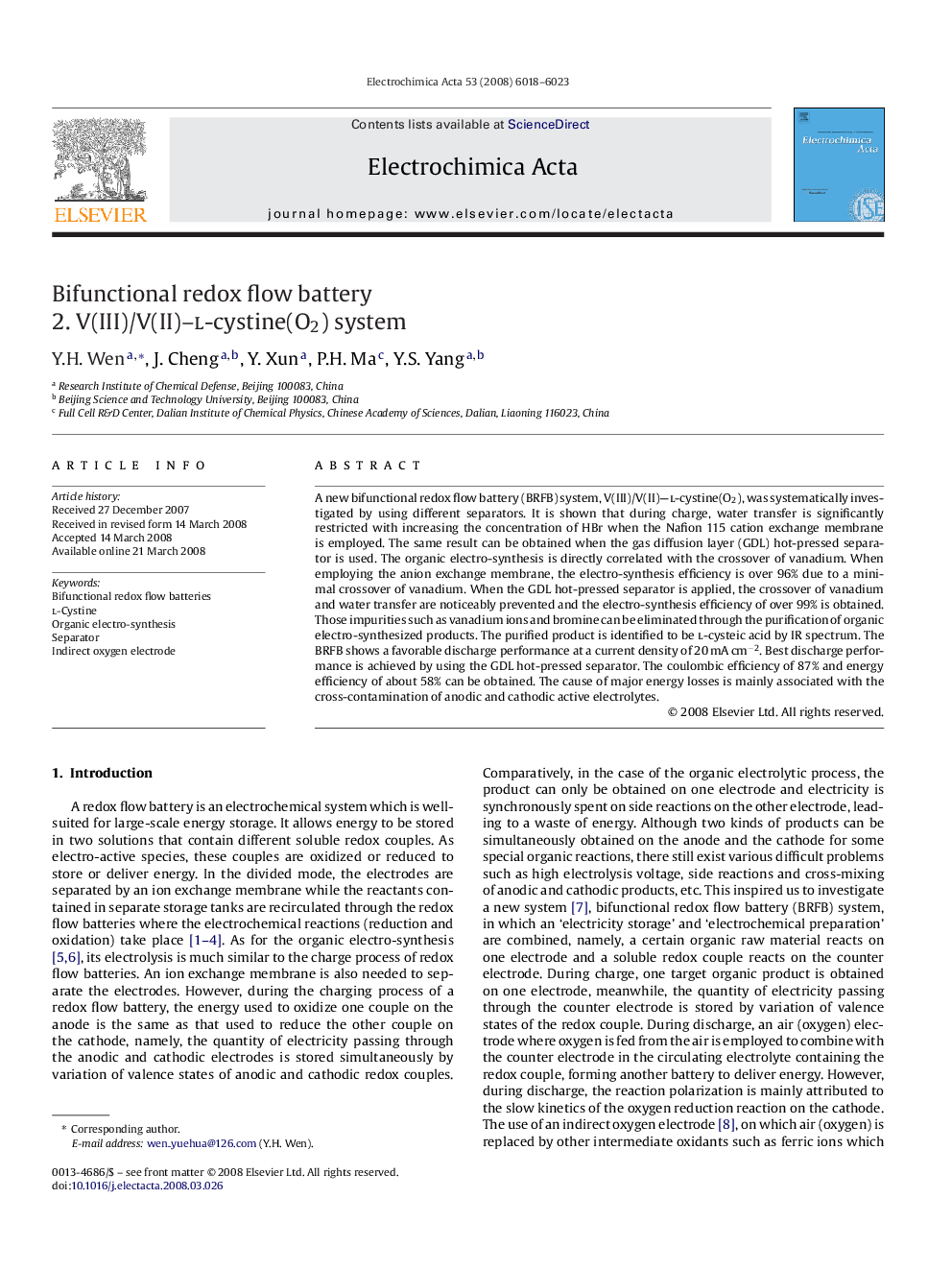| Article ID | Journal | Published Year | Pages | File Type |
|---|---|---|---|---|
| 192054 | Electrochimica Acta | 2008 | 6 Pages |
A new bifunctional redox flow battery (BRFB) system, V(III)/V(II)—l-cystine(O2), was systematically investigated by using different separators. It is shown that during charge, water transfer is significantly restricted with increasing the concentration of HBr when the Nafion 115 cation exchange membrane is employed. The same result can be obtained when the gas diffusion layer (GDL) hot-pressed separator is used. The organic electro-synthesis is directly correlated with the crossover of vanadium. When employing the anion exchange membrane, the electro-synthesis efficiency is over 96% due to a minimal crossover of vanadium. When the GDL hot-pressed separator is applied, the crossover of vanadium and water transfer are noticeably prevented and the electro-synthesis efficiency of over 99% is obtained. Those impurities such as vanadium ions and bromine can be eliminated through the purification of organic electro-synthesized products. The purified product is identified to be l-cysteic acid by IR spectrum. The BRFB shows a favorable discharge performance at a current density of 20 mA cm−2. Best discharge performance is achieved by using the GDL hot-pressed separator. The coulombic efficiency of 87% and energy efficiency of about 58% can be obtained. The cause of major energy losses is mainly associated with the cross-contamination of anodic and cathodic active electrolytes.
